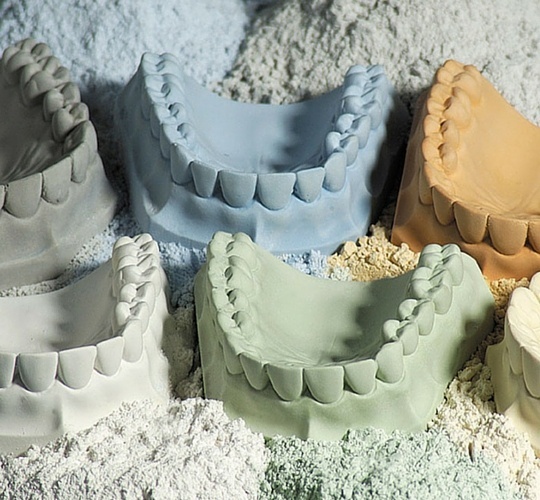In this day and age, we all seem to be in a rush and demand that things move quickly. This includes our daily schedules, transportation, computer systems, food, applications and even the rate of cure on dental materials like gypsum. Recently we have been asked some questions about whether the application of heat can be used as a disinfectant for gypsum models.
To answer the questions about these procedures, let us first take a closer look again at the chemistry involved in setting gypsum.
Dental gypsum in powder form is CaSO4 1/2 H2O (Calcium Sulfate Hemi-Hydrate). The technician adds water back to the powder to create CaSO4 2 H2O (Calcium Sulfate Di-Hydrate) and the mixture “sets” by the growth of gypsum crystals.
Adding heat to the setting stone drives off excess water which, in turn, dries it more rapidly. However, if you drive off the moisture too rapidly, crystals will not have enough time to re-form and the stone will lose its strength, the surface will become chalky and your model can crumble & fracture. Remember that the hardened material has water molecules attached. Drive them off with heat and you change the chemistry and the nature of the stone.
The same is true for those who try to use heat as a disinfectant. To create the gypsum powder, the raw gypsum is crushed and heat applied to drive off water and create a hemi-hydrate. Heating up the stone to disinfect it, drives the water from the set stone and reduces it to the powder form.
The temperature at which it is safe to apply heat seems to be about 150°F or 66°C. This is not a very high temperature, so it will be of no use disinfecting. Keep these models out of the autoclave. In this procedure, it is best to stick with chemical disinfectants, which are safe for laboratory use, and allow the time necessary for the chemistry to work.
Adding heat to shorten the set time will also prevent the full growth of the gypsum crystals and thus may change the expansion of the setting gypsum and size of the restoration. The best application of this heat is to let the stone harden for a minimum of forty minutes to one hour and then use the heat sparingly - and not above 150°F - to remove the remaining water.










Leave a comment